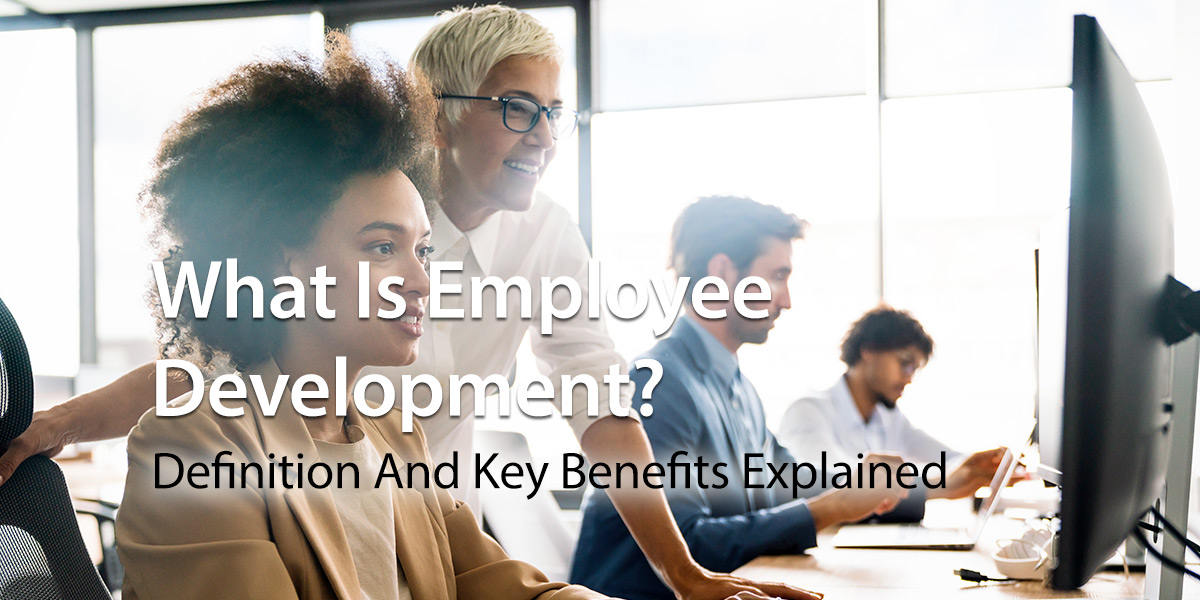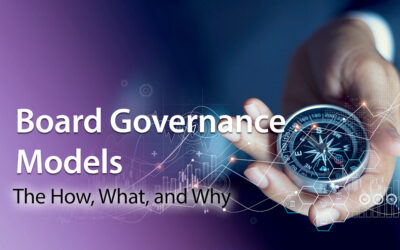Employee development has never been more critical as issues with recruitment and retention continue to bite. One proven way to turn the tide is investing in your human capital. However, effective employee development is about more than just investing in your people. It’s also about safeguarding the growth and performance of your organization. In the words of Jeff Bezos, ‘In business, what’s dangerous is not to evolve.’
Today’s post explores what employee development means. We examine all the benefits and explain how to create an employee development plan in five simple steps.
Ready to get started? Let’s dive in with a definition.
What Is Employee Development?
Employee development enhances workers’ skills, knowledge, and capabilities to support their career growth and contribute to business goals. It’s an ongoing process and not just a one-off training program.
What Is An Example Of Employee Development?
Professional development takes many forms, from mentoring and coaching to conferences, tertiary study, and beyond. It could include training initiatives, simulations, and role-playing. It can even involve the latest AR and VR technology for immersive learning opportunities replicating the real world.
Ultimately, it’s the worker’s responsibility to own their career development. However, employers stand to benefit from the employee’s enhanced knowledge and expertise. This adds value to the work team members do. So, it’s in the company’s interest to encourage employees by providing professional development opportunities.
However, there are other benefits on offer. Let’s break down why a good professional development program is a must.
Why Is Employee Development So Important?
- Increase employee retention
- Attract top talent
- Improve employee engagement
- Enhance employee motivation
- Boost productivity and performance
The bottom line is that employee development is a key driver of business growth. Employees feel valued and appreciated. And they can see a future with your organization rather than a competitor.
What Are The Benefits Of A Robust Employee Development Program?
Here’s a closer look at the impacts that make employee development important.
Increase Employee Retention
We don’t need to tell you that top-talent employees are hard to come by. LinkedIn’s 2023 Workplace Learning Report shows that 93 percent of businesses are concerned about employee turnover. And the number one way organizations tackle the problem is by investing in development opportunities. After all, the median cost to recruit new hires is $4,700 per vacancy. Even though an employee development plan requires time, effort, and resources, it’s worth doing. And it will save money in the long term.
Attract Top Talent
Developing employees and providing personal growth opportunities boost your employer brand. No one wants a dead-end job with no prospect of learning new skills or developing. Job seekers everywhere are examining the employee development plans of potential employers before jumping ships.
Improve Employee Engagement
According to the Dale Carnegie Institute, engaged employees deliver exceptional productivity improvements of up to 202 percent.
And professional development is a key driver of employee engagement. It’s simple. When company management is committed to skills development, workers feel valued and happier in their jobs. And a highly engaged workforce is the gift that keeps on giving. There’s an uptick in employee performance, and company culture thrives. And all those positive vibes make you an employer of choice.
Enhance Employee Motivation
Improved motivation is another welcome spinoff of staff development. Acquiring new skills and knowledge improves workers’ performance and boosts their confidence and satisfaction. Continuous development also helps employees stay engaged and focused in their work by giving them new challenges. And seeing a clear career path and future opportunities is incredibly motivating for tenured employees and fresh hires alike.
Boost Productivity And Performance
A Gallup study shows companies that invest in a strategic employee development plan are 11 percent more profitable than those that don’t.
Improving employees’ existing skills or supporting them to develop new ones pays dividends. Team members stay updated on best practices and new technologies, enabling them to adapt and innovate more quickly. And it ensures team members have confidence and mastery over their daily tasks, improving the quality and efficiency of their outputs.
What Are The Four Approaches To Employee Development?
Before you can start crafting a plan, we need to explore the four approaches to employee development. These will be the meat on the bones of your plan. Use the four approaches individually or in combination to create an employee development plan tailored to the organization’s and employees’ needs. And the good news is that many of these approaches are low-cost. You don’t have to spend a fortune to invest in staff development.
Employee Training
This approach provides structured learning to enhance employees’ skills and knowledge in specific areas, such as soft skills. Options include professional training, lunch and learn events, workshops, tertiary courses, or online training programs.
Job Rotation
Job rotation involves temporarily assigning employees to different internal roles or departments. Assignments could be for just a few weeks or extended to several months. Job rotation helps employees gain exposure to various jobs and fires up cross-team communication. It broadens workers’ skill sets and helps them develop a deeper understanding of the organization. And it’s particularly valuable to new employees still finding their feet in the organization.
Mentoring And Coaching
Mentoring involves pairing employees with experienced internal or external individuals who provide guidance, advice, and support in their development plans. By contrast, coaching involves one-on-one sessions with a coach who helps employees identify strengths, weaknesses, and skills gaps. The coach also guides workers to achieve development goals. And it’s a fantastic way to support knowledge sharing within your business.
Job Enrichment and Job Shadowing
Job enrichment involves expanding the scope and complexity of an employee’s current role, allowing them to take on additional responsibilities and challenges. Cross-departmental collaboration is an excellent example of job enrichment in action.
Job shadowing involves observing and learning from more experienced colleagues. Workers gain valuable skills and new insights while learning on the job.
How Do I Create An Employee Development Plan?
Now’s the time to get started on developing your own employee development plan. Planning and preparation are vital to success, as with any critical business activity.
We’ve broken the task up into five simple steps. Use the tips and advice to develop robust employee development plans and start reaping the rewards.
1. Assess Employees’ Needs
You need to take stock of where you are at before you can move forward. And so this crucial first step involves assessing the skills, knowledge, and abilities of your current workforce. Performance reviews, surveys, or discussions with employees and managers will help you harvest the crucial data.
Next, identify areas where professional development is a must and align those with your organizational goals. Human resources often take the lead on needs assessment. However, the task can also be completed by an individual team leader.
2. Define Your Business Goals
Once you have identified the overall development needs, set clear and specific business objectives. These objectives should be measurable and achievable within a defined timeframe. The SMART technique may be useful here.
Business goals then cascade throughout the organization into employee-specific development plans. Make sure that you align objectives with the worker’s career aspirations and the organization’s needs.
3. Identify Professional Development Opportunities
Next, select professional development activities to help employees get the skills and knowledge needed. This will include elements of the four approaches we identified earlier. Take your pick from employee training programs, conferences, online courses, coaching, job rotations, or mentoring. And consider both formal and informal learning methods to cater to different learning styles.
4. Create An Action Plan
Prepare a detailed action plan for each employee, outlining career development activities, timelines, responsibilities, and resources. And provide support to help the employee’s career development plans. For some employers, support means paid time off. For others, it involves help towards tuition fees.
5. Monitor And Evaluate Progress
Regularly monitor and evaluate workers’ progress in the employee development program. Managers should provide feedback and guidance along the way to ensure they stay on track. Revise the plan based on the employee’s progress, changing organizational needs, or new opportunities.
Remember, employee development is an ongoing journey. So be sure to check in with individual staff regularly. Managers and supervisors should provide feedback, celebrate achievements, and support employees to overcome obstacles or challenges.
Furthermore, the professional development plan will likely be tweaked along the way. For example, workers may need more training in response to emerging industry trends or new corporate initiatives.
How Do You Encourage Employee Development?
Career development is a surefire way to boost company culture in today’s workplace. You will retain employees, recruit new skilled ones, and motivate the team to give their best. Use the following tips to ensure employees jump on board with the program.
Create A Learning Culture
Employee development starts at the top. C-suite executives and senior managers should role model the right mindset and lead by example. Even the CEO has much to gain and should have their own employee development plan. Make sure your company culture and values support continuous learning and knowledge sharing. And offer opportunities for workers to share their newfound knowledge and expertise with lunch-and-learns or online webinars.
Be Flexible
Your people have busy lives and work-life balance is a priority for them. When it comes to effective employee development, flexibility is the order of the day. Consider allowing employees to take paid time away to achieve their development plan. Adjust employees’ responsibilities so they are not swamped with day-to-day tasks upon their return. Offer a wide choice of learning opportunities and promote anytime, anywhere eLearning that more easily fits in with their home commitments.
Recognize And Reward Growth
Celebrate the achievements of workers as they complete each stage of the employee development plan. Recognition can come in a variety of ways. Here are some ideas to inspire you:
- Shoutout on team chat for new hires who complete onboarding
- Public recognition on the intranet newsfeed for achieving a certificate
- Financial reward to an employee’s salary or employee base pay increases
- Additional responsibilities or a promotion
Make Professional Development An Everyday Conversation
Don’t leave discussions about career development plans for the annual performance review. Instead, show your commitment by making it an everyday part of work. Regularly check in with team members about how things are going. Offer advice and support and stress the value of employee development as the road to greater job satisfaction, improved performance, and a successful career.
Employee Development: Quick Summary
We’ve covered a lot of ground, so here’s a handy summary of the main points:
Leverage the four main approaches to employee development when developing your program:
- Employee training
- Job rotation
- Mentoring and coaching
- Job enrichment and shadowing
Get started on developing your employee development plan in five simple steps:
- Assess employee’s needs
- Define your goals
- Identify professional development needs
- Create an action plan
- Monitor and evaluate progress
Recruitment and retention are major headaches for companies worldwide. Investing in professional development will improve longer-term employee retention. What’s more, skilled employees are doing their homework and checking out the credentials of potential employers. Robust employee development plans make it a whole lot easier to recruit the best talent. It will also power up employee engagement, and that’s good news for all-round business success.
About MyHub
We’re a leading supplier of cloud intranet software. Our clients come from all industries across the world. Super easy to use, our intranets connect employees to the information and resources they need daily. Find out more with a free demo or 14-day trial.
And why not sign up for our insightful blog? We’ll keep you updated on all the latest trends and developments to help you stay ahead of the pack.










0 Comments